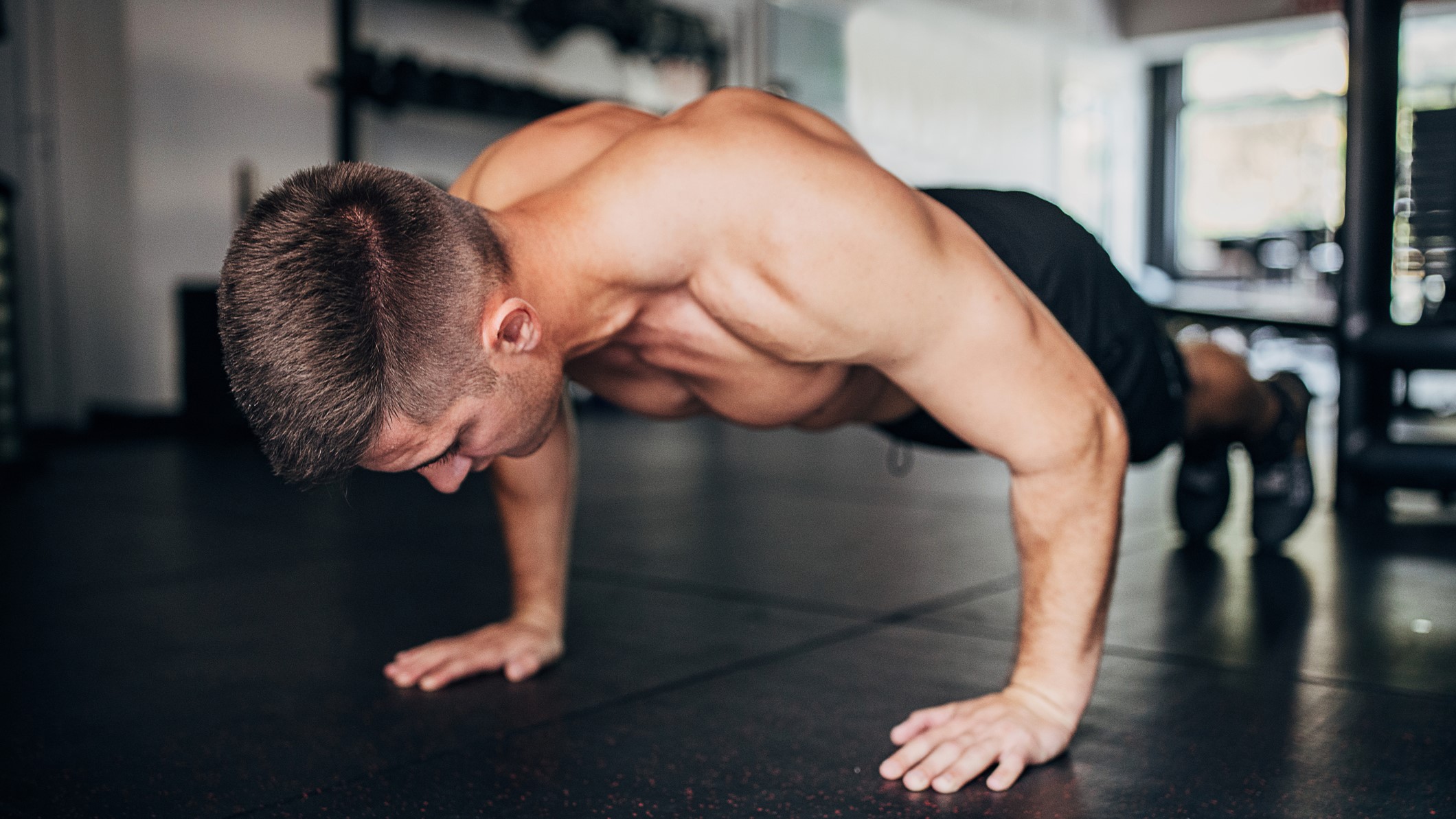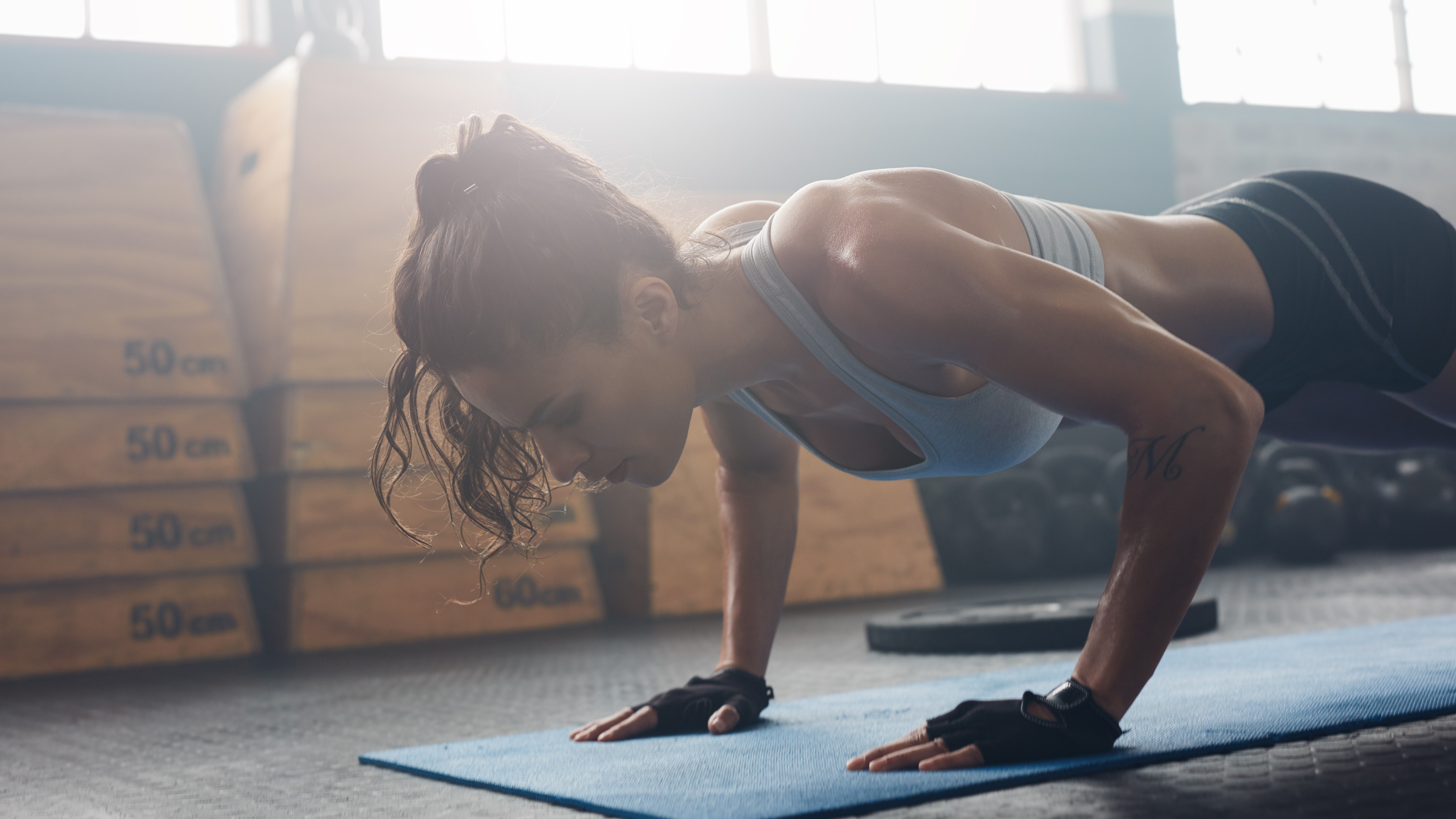Push-ups: How to do them, the benefits, and modifications to try
Learn how to do a push-up with good form and why it matters

Whether or not push-ups form a regular part of your exercise regime, learning how to do a push-up correctly should be a top priority. It's a staple compound exercise, working multiple muscle groups, including your pectoral muscles, shoulders, and arms.
Even if you don't include them on chest day, learning how to push your body weight is important for daily functioning and building upper body strength. Although strong arms can be built by lifting heavy weights, push-ups are one of the best bodyweight exercises to build your arm strength.
A study published in the Journal of Strength and Conditioning Research found that push-ups and weighted bench presses have similar muscle gains. But if you are looking for weights to strength train at home aside from barbells, we’ve found the best adjustable dumbbells.
When done correctly, a push-up will engage your core and strengthen your upper body. Here’s everything you need to know about mastering the push-up and modifications to try. Fed up with push-ups? Try these chest day variations to spice things up.
How to do a push-up
- Start by getting into a plank position, with your weight underneath your shoulders and your palms flat on the floor, shoulder-width apart
- Straighten your arms and engage your abs, thinking about sucking your belly button into your spine
- You should maintain a straight line from your heels to the crown of your head
- Slowly, with control, bend your arms and lower your chest to the floor, pause, then raise back to your starting position.
What are the benefits of push-ups?
When done correctly, push-ups work the pectoral (chest) muscles, the deltoids (shoulders), and the tricep muscles (back of your arms). They also target your abdominal muscles.
To see the effects of push-ups, you’ll need to do more than a couple of repetitions here and there. You'll need to develop a program that includes push-ups several times per week across several months. If you’re new to the exercise, start by trying 3-4 sets of 6-12 reps, starting from your knees and building as you get stronger. You can also mix things up by adding push-up variations that emphasize different parts of the body.

How can you modify push-ups?
If you struggle with a push-up, start by trying these three modifications:
Sign up to get the BEST of Tom's Guide direct to your inbox.
Get instant access to breaking news, the hottest reviews, great deals and helpful tips.
Wall push-ups: Put your palms flat on the wall, arms outstretched, and slowly lower your torso to the wall, pause, then push yourself back up to the starting position.
Incline push-ups: For this exercise, you’ll need a block, bench, table, or chair. Put your palms on the surface and extend your legs out straight behind you. Keep your body in a straight line, and your elbows into your body, and perform the push-up at an incline.
Knee push-ups: Alternatively, you can make push-ups easier by lowering your knees to the floor during the exercise. From the high-plank position, drop to your knees, but ensure you roll onto the top of your knees for the entire exercise. Engage your core, bend your elbows, and lower your chest to the floor, before raising back to your starting position.
Diamond push-ups: Diamond push-ups work your triceps harder than traditional push-ups. To do a diamond push-up, simply make a diamond shape with your two hands, rather than keeping them shoulder-width apart during the exercise.
Raised push-ups: By changing your center of gravity, you automatically increase the intensity of the exercise. Raise your legs onto a chair, step, or the couch, and push up from there. The higher your legs are, the harder the push-up will be.
One-armed push-ups: This one is really challenging, and definitely not for beginners. From your plank position, put one hand behind your back and complete the push-up using just one arm. Alternatively, raise one leg off the floor as you push up to make things harder.
Weighted push-ups: Last, but certainly not least, add some weight. You can do this by using a weighted vest (here's what happened when a TG staffer worked out with a weight vest for a week), or if you’re in the gym, a weighted bar plate that you can get a friend to put on your back.
More from Tom's Guide

Jane McGuire is Tom's Guide's Fitness editor, which means she looks after everything fitness related - from running gear to yoga mats. An avid runner, Jane has tested and reviewed fitness products for the past five years, so knows what to look for when finding a good running watch or a pair of shorts with pockets big enough for your smartphone. When she's not pounding the pavements, you'll find Jane striding round the Surrey Hills, taking far too many photos of her puppy.
- Sam HopesSenior Fitness Writer, Fitness and Mobility Coach
